communism
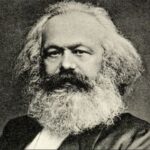
 There are a number of different kinds of governments, and people disagree on which is the best. Personally, I think that any government that takes away the freedoms of its people is destined to fail. Communism is a “political theory derived from Karl Marx, advocating class war and leading to a society in which all property is publicly owned, and each person works and is paid according to their abilities and needs.” Communism is also, known as Marxism, which is defined as “the political and economic theories of Karl Marx and Friedrich Engels, later developed by their followers to form the basis for the theory and practice of communism.” I don’t think most people know the real meaning of Marxism or Communism, or, for that matter, Socialism, which is “a political and economic theory of social organization which advocates that the means of production, distribution, and exchange should be owned or regulated by the community as a whole.” If people knew what these types of governments are really like, they would fight to keep them out of their countries. The problem is that people think the government will take care of them, and that they will benefit from the work of others. It never works that way. everyone in these situations gets poorer, except for the government.
There are a number of different kinds of governments, and people disagree on which is the best. Personally, I think that any government that takes away the freedoms of its people is destined to fail. Communism is a “political theory derived from Karl Marx, advocating class war and leading to a society in which all property is publicly owned, and each person works and is paid according to their abilities and needs.” Communism is also, known as Marxism, which is defined as “the political and economic theories of Karl Marx and Friedrich Engels, later developed by their followers to form the basis for the theory and practice of communism.” I don’t think most people know the real meaning of Marxism or Communism, or, for that matter, Socialism, which is “a political and economic theory of social organization which advocates that the means of production, distribution, and exchange should be owned or regulated by the community as a whole.” If people knew what these types of governments are really like, they would fight to keep them out of their countries. The problem is that people think the government will take care of them, and that they will benefit from the work of others. It never works that way. everyone in these situations gets poorer, except for the government.
The Union of Soviet Socialist Republics (USSR) was established in post-revolutionary Russia, on December 30, 1922. It combined Russia, Belorussia, Ukraine and the Transcaucasian Federation (which was divided in 1936 into the Georgian, Azerbaijan and Armenian republics). The new nation was also known as the Soviet Union. It was the successor to the Russian Empire and the first country in the world to be based on Marxist socialism. The rest of the world was rather stunned that this kind of regie actually existed, because it took away so many freedoms and personal property, and the people had no choice.
Because Russia was reeling from the Russian Revolution of 1917 and subsequent three-year Russian Civil War, the Bolshevik Party under Vladimir Lenin dominated the soviet forces. A coalition of workers’ and soldiers’ committees called for the establishment of a socialist state in the former Russian Empire. It was from there that the USSR was formed, and after that, all levels of government were controlled by the Communist Party, and the party’s Politburo, with its increasingly powerful general secretary, who effectively ruled the country. Everything, from Soviet industry was owned and managed by the state, and agricultural land was immediately confiscated and divided into state-run collective farms.
Over the coming decades, the Russian-dominated Soviet Union grew into one of the world’s most powerful and influential states. It eventually encompassed 15 republics…Russia, Ukraine, Georgia, Belorussia, Uzbekistan, Armenia, Azerbaijan, Kazakhstan, Kyrgyzstan, Moldova, Turkmenistan, Tajikistan, Latvia, Lithuania and Estonia. 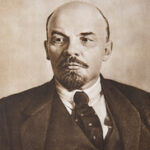
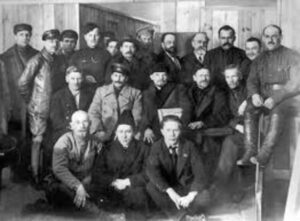 The USSR, as many knew it must, eventually failed because you can’t place people into a slave state without eventual rebellion. In 1991, the Soviet Union was dissolved following the collapse of its communist government. Communism, Marxism, and Socialism simply won’t work in the long run. If a nation wants growth and prosperity, they must have capitalism, so that the people have the incentive to be entrepreneurs, inventors, scientists, and so many other occupations in which discovery is made. Without incentive, people will simply quit.
The USSR, as many knew it must, eventually failed because you can’t place people into a slave state without eventual rebellion. In 1991, the Soviet Union was dissolved following the collapse of its communist government. Communism, Marxism, and Socialism simply won’t work in the long run. If a nation wants growth and prosperity, they must have capitalism, so that the people have the incentive to be entrepreneurs, inventors, scientists, and so many other occupations in which discovery is made. Without incentive, people will simply quit.
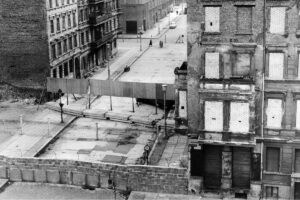
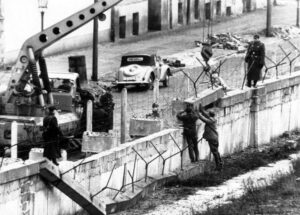 In August of 1961, virtually overnight, the Berlin appeared, separating East and West Berliners from each other. Streets, subway lines, bus lines, tramlines, canals, and rivers were divided. Family members, friends, lovers, schoolmates, work colleagues, and others were abruptly separated. For many, life was put on hold. That meant that families were instantly separated from each other, and there was nothing anyone could do about it. If a child was spending the night with a grandparent, they now had to stay there. If couples were separated, possibly due to jobs or something, they couldn’t get back together. Families who lived on opposite sides of town, couldn’t see each other. No recourse. All the families could do was stand beside the wall and talk to each other.
In August of 1961, virtually overnight, the Berlin appeared, separating East and West Berliners from each other. Streets, subway lines, bus lines, tramlines, canals, and rivers were divided. Family members, friends, lovers, schoolmates, work colleagues, and others were abruptly separated. For many, life was put on hold. That meant that families were instantly separated from each other, and there was nothing anyone could do about it. If a child was spending the night with a grandparent, they now had to stay there. If couples were separated, possibly due to jobs or something, they couldn’t get back together. Families who lived on opposite sides of town, couldn’t see each other. No recourse. All the families could do was stand beside the wall and talk to each other.
From the time of its construction, it was more than two years after before anyone was able to cross from one side of the wall to the other. In the meantime, children grew, children were born, people died. Some children and grandchildren never got to see their parents or grandparents again. The whole purpose of the Berlin Wall was to force the people in East Berlin to accept communism. The only way they “might be able” to stay alive was to comply. So, the citizens of East Berlin became virtual prisoners overnight. Their sentence was long, and they had no trial. They were simply locked up in their own city.
The “sentence” continued for more than two years, before anything changed. Then, finally, on December 20, 1963, nearly 4,000 West Berliners were allowed to cross into East Berlin to visit relatives. It was called a “one-day pass” and didn’t mean the end of the siege. Nevertheless, it was a moment of hope. The day was a result 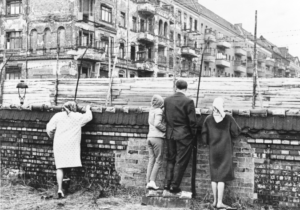
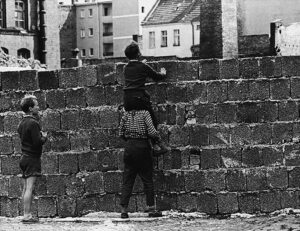 of an agreement reached between East and West Berlin. Eventually, over 170,000 passes were issued to West Berlin citizens, each pass allowing a one-day visit to communist East Berlin. Of course, there would be no passes for East German citizens to visit the west. The government knew they would not come back.
of an agreement reached between East and West Berlin. Eventually, over 170,000 passes were issued to West Berlin citizens, each pass allowing a one-day visit to communist East Berlin. Of course, there would be no passes for East German citizens to visit the west. The government knew they would not come back.
The day was marketed as a “wonderful government” doing some kind of a great thing. There were also moments of poignancy and propaganda. The reunions who were filled with tears, laughter, and other outpourings of emotions as mothers and fathers, sons and daughters finally met again. They were grateful, if only for a short time. The tensions of the Cold War were ever close by.
As people crossed through the checkpoints, loudspeakers in East Berlin greeted them. They were told that they were now in “the capital of the German Democratic Republic,” a political division that most West Germans refused to accept. The propaganda continued as each visitor was given a brochure that explained that the wall was built to “protect our borders against the hostile attacks of the imperialists.” They were told that decadent western culture, including “Western movies” and “gangster stories,” were flooding into East Germany before the wall sealed off such dangerous trends. The picture they were painting was of the East German government being the “saviors of the morality” of the people.
The West Berliners weren’t terribly happy either and many newspapers charged that the visitors charging that they were just pawns of East German government propaganda. It was said that the whole thing was a ploy to 
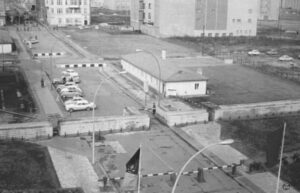 gain West German acceptance of a permanent division of Germany. Whatever the case may be, the visitors felt that they had no choice to comply with the rules, because their hearts were being torn out by these separations. The separation continued until President Reagan called for the wall to be torn down in a speech in West Berlin on June 12, 1987…almost 26 years after it was built.
gain West German acceptance of a permanent division of Germany. Whatever the case may be, the visitors felt that they had no choice to comply with the rules, because their hearts were being torn out by these separations. The separation continued until President Reagan called for the wall to be torn down in a speech in West Berlin on June 12, 1987…almost 26 years after it was built.
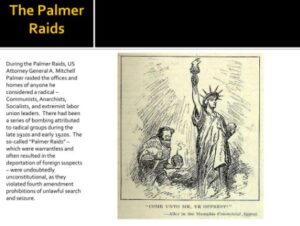 There has been a lot of talk in the news lately about Capitalism verses Socialism or Communism. Capitalism is clear-cut from the other ideologies, but the same cannot be said about communism and socialism. Socialism and communism are often used in place of each other despite being fundamentally different from each other. Capitalism puts the control of one’s assets in the hands of the individual, while socialism and communism put all or most assets in the hands of the government to hand out…or not…as they see fit. In my opinion, the government agencies we have really haven’t done such a great job that I would want to go back and give them more power and control.
There has been a lot of talk in the news lately about Capitalism verses Socialism or Communism. Capitalism is clear-cut from the other ideologies, but the same cannot be said about communism and socialism. Socialism and communism are often used in place of each other despite being fundamentally different from each other. Capitalism puts the control of one’s assets in the hands of the individual, while socialism and communism put all or most assets in the hands of the government to hand out…or not…as they see fit. In my opinion, the government agencies we have really haven’t done such a great job that I would want to go back and give them more power and control.
These days there are many people who would like to switch to Socialism or Communism, but I think it’s because they don’t understand these ideologies. The United States used to understand them very well, and when some of the immigrants tried to bring Socialism and Communism into this counter, in late 1919, and into January 1920, President Woodrow Wilson directed the United States Department of Justice to carry out a series of raids to capture, arrest, and deport these immigrants, because they should never be allowed to come to our 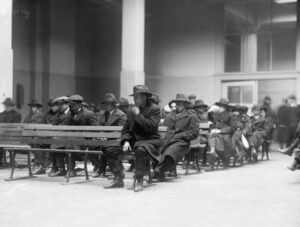 country and they try to change it in the country they chose to leave…especially because the reason they left was because it wasn’t working in their country.
country and they try to change it in the country they chose to leave…especially because the reason they left was because it wasn’t working in their country.
These raids were called the Palmer Raids. The primary targets were Italian immigrants and Eastern European Jewish immigrants with alleged leftist ties, with particular focus on Italian anarchists and immigrant leftist labor activists. Attorney General A Mitchell Palmer spearheaded the operation, and the result was that 3,000 people were arrested. Of the 3,000 arrested, 556 foreign citizens were deported, including a number of prominent leftist leaders.
As often happens in government, what one department likes another doesn’t, so Palmer’s efforts were largely frustrated by officials at the US Department of Labor, which had authority for deportations. They apparently objected to Palmer’s methods. The Palmer Raids during the time of the First Red Scare, a period of fear of and reaction against communists in the US in the years immediately following World War I and the Russian Revolution…the Cold War era. The Palmer Raids were strikes that garnered national attention, and prompted race riots in more than 30 cities, as well as two sets of bombings in April and June 1919, including one bomb mailed to Palmer’s home. Whether the methods were good or bad, I agree that no immigrants should ever 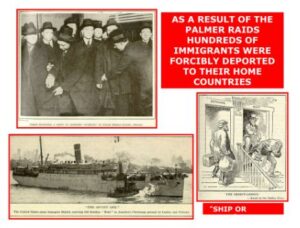 expect to come into this country and then fundamentally change how we run things until it becomes just like the nation that they worked so hard to escape.
expect to come into this country and then fundamentally change how we run things until it becomes just like the nation that they worked so hard to escape.
Unfortunately, Palmer’s raids became the subject of public criticism and led to the rise of the ACLU. Because very little evidence of terrorist bombs was uncovered during the raids, and people were held without legal representation, and some of the raids were carried out without search warrants, the whole operation took on a bad light, even if some of those who were arrested and deported were, in fact, terrorists.
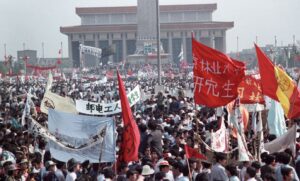 Some heroes are forever unknown, and the hero of Tiananmen Square remains unknown to this day. I’m not sure how they can manage never to tell anyone about their heroic act, but then in 1989 Bejing, China, being able to keep your mouth shut was tantamount to staying alive.
Some heroes are forever unknown, and the hero of Tiananmen Square remains unknown to this day. I’m not sure how they can manage never to tell anyone about their heroic act, but then in 1989 Bejing, China, being able to keep your mouth shut was tantamount to staying alive.
The summer of 1989 found Tiananmen Square in Bejing overtaken with pro-democracy protestors…a situation that the communist government was not happy about. Students, workers, soldiers, and teachers had joined together in peaceful protest, seeking democracy, freedom of the press, and freedom of speech. As the protests progressed, they were joined by more, and more…and still more people. At the height of the protest, an estimated one million people were milling around in the square, and their efforts were becoming known worldwide. In fact, the world was becoming inspired by the efforts of the protestors.
The Chinese government, however, was becoming highly agitated by what was going on, because they felt like they were losing control. So, on June 4, the Chinese government cracked down on those protests in the most horrific way. They sent in armed military and tanks. The inevitable result was that the government killed hundreds, and even thousands of protestors, even shooting them in the back as they were running away.
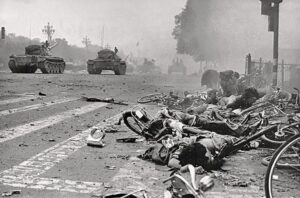
The killing continued into the next day, and just after noon on June 5 a line of eighteen tanks began rolling down Avenue of Eternal Peace. The tanks, representative of a corrupt government power, came lumbering down the street…impenetrable, unstoppable, and fully able to squash a person like a bug. The show of force continued its parade down the Avenue, toward Tiananmen Square…until one lone man stood in their way. The unknown man, dressed in a simple white shirt and black pants, holding two shopping bags, strode into the Avenue and stood directly in front of the lead tank. Amazingly, it stopped. Then the tank moved right, but the unknown man countered. Then it moved left, and he countered again. The standoff drew national attention, and the unknown man became known as “Tank Man.” The interaction lasted just a few minutes, it proved that one “everyday person” can accomplish a lot, by standing up to tyranny. One report suggested that he was the son of factory workers…a blue-collar guy growing up in a blue-collar family in a blue-collar neighborhood. And because of censorship restrictions in China, he may not even know about the images of him, or that Time Magazine named him one of the century’s “top revolutionaries.” The reality is that he wasn’t a revolutionary…at least not in the sense that he went out and fought with the resistance. He was just a guy who saw something that was horribly wrong and decided that it was enough!! His stand said simply, “No More!!”
This everyday citizen managed, single-handedly to stop the killing that day, and he intended to do it even if it 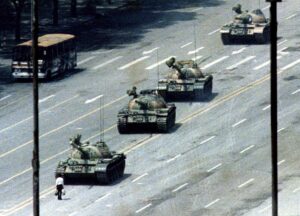 cost him his life. That is inspiring, because it tells us that if we see something wrong and decide to take action, we too can change the world. If we sit idly by and do nothing to stop tyranny, then we are no better than those who are bringing tyranny.
cost him his life. That is inspiring, because it tells us that if we see something wrong and decide to take action, we too can change the world. If we sit idly by and do nothing to stop tyranny, then we are no better than those who are bringing tyranny.
We are seeing movements just like this one man since the 2020 election. People who have never run for office before, suddenly are. People are showing up at school board meetings, city council meeting, and other such governmental meetings. People are taking a stand and proving that we are a voice to be reconned with, and we will not be bullied anymore.
 Many people believe that there was no good reason for the war in Vietnam. It seemed like a war we were not going to be allowed to win, and many thought it should have been one we just stayed out of. Vietnam became a French colony in 1877 with the founding of French Indochina, which included Tonkin, Annam, Cochin China and Cambodia…Laos was added in 1893. The French lost control of their colony briefly during World War II, when Japanese troops occupied Vietnam.
Many people believe that there was no good reason for the war in Vietnam. It seemed like a war we were not going to be allowed to win, and many thought it should have been one we just stayed out of. Vietnam became a French colony in 1877 with the founding of French Indochina, which included Tonkin, Annam, Cochin China and Cambodia…Laos was added in 1893. The French lost control of their colony briefly during World War II, when Japanese troops occupied Vietnam.
After the war, Japan and France continued to fight over Vietnam. Ho Chi Minh, a revolutionary leader inspired by Lenin’s Bolshevik Revolution began forming an independence movement. He established the League for the Independence of Vietnam, better known as the Viet Minh, in May of 1941. On September 2, 1945, he declared Vietnam’s independence from France, just hours after Japan’s surrender in World War II. When the French rejected his plan, the Viet Minh resorted to guerilla warfare to fight for an independent Vietnam.
One of the most well-known campaigns of the Vietnam War was codenamed Operation Rolling Thunder. It was an American bombing campaign in which US military aircraft attacked targets throughout North Vietnam from March 1965 to October 1968. This operation was intended to put military pressure on North Vietnam’s communist leaders, thereby reducing their capacity to wage war against the US-supported government of South Vietnam. With that, operation American began its involvement began, not only its assault on North Vietnamese territory, but the expansion of US involvement in the Vietnam War.
By the 1950s, the US military began providing equipment and advisors to help the government of South Vietnam to resist a communist takeover by North Vietnam and its South Vietnam-based allies, the Viet Cong guerrilla fighters. The American military initiated limited air operations within South Vietnam in 1962, in an effort to offer air support to South Vietnamese army forces, destroy suspected Viet Cong bases, and spray herbicides such as Agent Orange to eliminate jungle cover. It was an ugly time for anyone in the area. In August 1964, President Lyndon B Johnson expanded American air operations, when he authorized retaliatory air strikes against North Vietnam following a reported attack on US warships in the Gulf of Tonkin. Later that year, Johnson approved 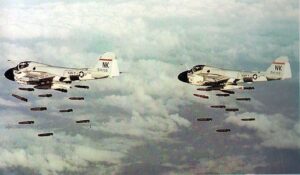 limited bombing raids on the Ho Chi Minh Trail, a network of pathways that connected North Vietnam and South Vietnam by way of neighboring Laos and Cambodia. The president’s goal was to disrupt the flow of manpower and supplies from North Vietnam to its Viet Cong allies. Nothing the United States tried really worked to remove the tensions in the area, and so in 1963, the United States withdrew from Vietnam. Unfortunately, they left behind bombs and land mines from Operation Rolling Thunder and other bombing campaigns of the Vietnam War. By some estimates, those bombs and land mines have killed or injured tens of thousands of Vietnamese people since the United States withdrew its combat troops in 1973.
limited bombing raids on the Ho Chi Minh Trail, a network of pathways that connected North Vietnam and South Vietnam by way of neighboring Laos and Cambodia. The president’s goal was to disrupt the flow of manpower and supplies from North Vietnam to its Viet Cong allies. Nothing the United States tried really worked to remove the tensions in the area, and so in 1963, the United States withdrew from Vietnam. Unfortunately, they left behind bombs and land mines from Operation Rolling Thunder and other bombing campaigns of the Vietnam War. By some estimates, those bombs and land mines have killed or injured tens of thousands of Vietnamese people since the United States withdrew its combat troops in 1973.
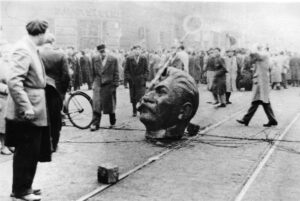 Those who support Socialism, Marxism, and Communism have simply never lived under these forms of government, or they are a part of the upper echelon of such a government. People who have been forced to live under these types of government, will ultimately try to find a way of escape or will participate in a national uprising, such as the one that happened in Hungary in 1956.
Those who support Socialism, Marxism, and Communism have simply never lived under these forms of government, or they are a part of the upper echelon of such a government. People who have been forced to live under these types of government, will ultimately try to find a way of escape or will participate in a national uprising, such as the one that happened in Hungary in 1956.
Sadly, by the time the people realize that they are in serious trouble, the government often has such a chokehold on the nation that the only way out if to have an uprising. Nevertheless, people will eventually fight for their rights, or fight to escape. While the uprising in Hungary began in October 1956, when thousands of protesters took to the streets demanding a more democratic political system and freedom from Soviet oppression, the real problem started long before that. It started when the Communist Party took over and began to systematically take away the rights of the people. There were a few people within the party who could see through the Communist Party’s ideas. When party officials appointed Imre Nagy, a former premier who had been dismissed from the party for his criticisms of Stalinist policies, as the new premier, he began to try to restore peace and asked the Soviets to withdraw their troops. The Soviets did so, but Nagy then tried to push the Hungarian revolt forward by abolishing one-party rule. He also announced that Hungary was withdrawing from the Warsaw Pact (the Soviet bloc’s equivalent of NATO).
This forced the hand of the Soviet government. On November 4, 1956, Soviet tanks rolled into Budapest to 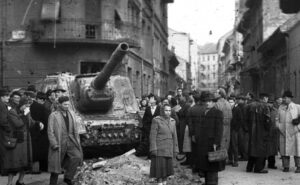 crush the national uprising, once and for all. Te fighting in the streets was vicious, but the Soviets’ greater power ensured their victory. The people had long been stripped of their weapons, and anything else that might have helped the achieve victory. At 5:20am Hungarian Prime Minister Imre Nagy announced the invasion to the nation in a grim, 35-second broadcast, declaring: “Our troops are fighting. The Government is in place.” He tried to reassure the people and keep hope alive, but within hours, Nagy sought asylum at the Yugoslav Embassy in Budapest. He was captured shortly thereafter and executed two years later. Nagy’s former colleague and imminent replacement, János Kádár, who had been flown secretly from Moscow to the city of Szolnok, 60 miles southeast of the capital, prepared to take power with Moscow’s backing. The conspiracy was complete, and the people had been betrayed…even their leader.
crush the national uprising, once and for all. Te fighting in the streets was vicious, but the Soviets’ greater power ensured their victory. The people had long been stripped of their weapons, and anything else that might have helped the achieve victory. At 5:20am Hungarian Prime Minister Imre Nagy announced the invasion to the nation in a grim, 35-second broadcast, declaring: “Our troops are fighting. The Government is in place.” He tried to reassure the people and keep hope alive, but within hours, Nagy sought asylum at the Yugoslav Embassy in Budapest. He was captured shortly thereafter and executed two years later. Nagy’s former colleague and imminent replacement, János Kádár, who had been flown secretly from Moscow to the city of Szolnok, 60 miles southeast of the capital, prepared to take power with Moscow’s backing. The conspiracy was complete, and the people had been betrayed…even their leader.
The people of the West were stunned by the Soviet action. Soviet leader Nikita Khrushchev had promised to retreat from the Stalinist policies and repression of the past, but the violent actions in Budapest told of a different plan. An out of control government will always chose its own greedy ways over the good of the people it is supposed to serve. On that day, an estimated 2,500 Hungarians died and 200,000 more fled as refugees. Sporadic armed resistance, strikes, and mass arrests continued for months thereafter, causing substantial economic disruption. The spontaneous national uprising that began 12 days before in Hungary was viciously crushed by Soviet tanks and troops on November 4, 1956.
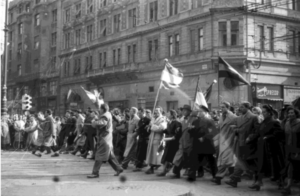
Many Hungarians were angered and frustrated by the inaction on the part of the United States. Voice of America radio broadcasts and speeches by President Dwight D Eisenhower and Secretary of State John Foster Dulles had recently suggested that the United States supported the “liberation” of “captive peoples” in communist nations, but they didn’t see that playing out in their situation. During that time, approximately 30,000 Hungarian refugees were allowed to enter the United States. Yet, as Soviet tanks bore down on the protesters, the United States did nothing beyond issuing public statements of sympathy for their plight.
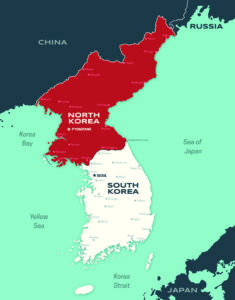 When the nations of North and South Korea were split, it was much like when Germany became East and West Germany…people were caught in the crossfire…so to speak. Despite being unified off and on for nearly 1,500 years, the Korean peninsula was divided into North and South as a result of the breakup of the Japanese empire at the end of World War II. The United States government knew that it would have to administer the Philippines, as well as Japan itself. It was a big job, so the United States was reluctant to also take trusteeship of Korea. Basically, Korea just wasn’t a very high priority for the United States. The Soviets, on the other hand, were more than willing to step in and take control of lands that the Tsar’s government had relinquished its claim to after the Russo-Japanese War (1904–05).
When the nations of North and South Korea were split, it was much like when Germany became East and West Germany…people were caught in the crossfire…so to speak. Despite being unified off and on for nearly 1,500 years, the Korean peninsula was divided into North and South as a result of the breakup of the Japanese empire at the end of World War II. The United States government knew that it would have to administer the Philippines, as well as Japan itself. It was a big job, so the United States was reluctant to also take trusteeship of Korea. Basically, Korea just wasn’t a very high priority for the United States. The Soviets, on the other hand, were more than willing to step in and take control of lands that the Tsar’s government had relinquished its claim to after the Russo-Japanese War (1904–05).
The Soviets wanted to set the country up as communist, and the United States wanted the country to be capitalist. The sad truth about the difference between communism and capitalism is that capitalism is about freedom, and communism is about slavery. The country was divided along the 38th parallel with a demilitarized zone along that line. The North Korean side of the 38th Parallel was ruled by communism, and the South was ruled by Capitalism. The economic impact was most unfortunate, in that two separate and “necessary to each other” industrial areas were now on 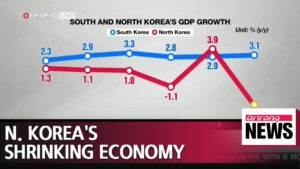 opposite sides. The two countries were now both poor.
opposite sides. The two countries were now both poor.
That was a sad state of affairs, but the worse state of affairs was what happened to the people. Communism being what is was, worried that if the people were allowed to cross the borders freely, they would not come back, and they were probably right. So the people who lived in North Korea and had family in South Korea were no separated from each other, and those in the south were equally separated from loved ones. It is a horrible situation, but there seemed to be no remedy for it. The separation went on for many years. Finally on October 31, 2010, the North Korean government relented to a degree. Four hundred and thirty-six South Koreans were allowed to spend three days in North Korea to meet their 97 North Korean relatives, whom they had been separated from since the 1950-1953 war. The three-day reunion was wonderful, but also bittersweet, because it was followed by a sad goodbye. The separation had been excruciating, and they had no recourse. They were at 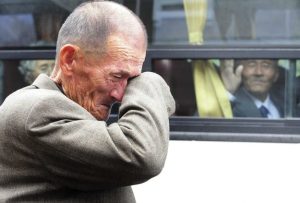 the mercy of the ruling government. Nevertheless, they were also thankful for the time to spend together, even if it meant a tearful goodbye following a luncheon meeting during inter-Korean temporary family reunions at Mount Kumgang resort.
the mercy of the ruling government. Nevertheless, they were also thankful for the time to spend together, even if it meant a tearful goodbye following a luncheon meeting during inter-Korean temporary family reunions at Mount Kumgang resort.
When you look at the realities of Socialism, Marxism, and Communism, you cannot really be surprised by the many people who are trying to escape from it’s grip. Most are willing to give their life to get out in the hope of giving their children a better life than that. Many lessons could be learned from the situation between North and South Korea, if we will only pay attention.
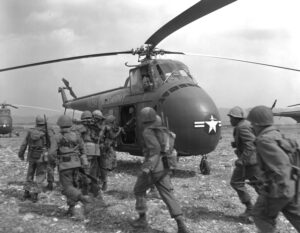 Most wars are nation against nation or against nations, but some wars split a nation in two…literally. Such was the case in Korea, which was once one nation, and after the war, became two nations. It seems like no matter which nation invades the other, or the other half, the invading nation is always trying to enslave the other nation or the other half of the nation. In the case of Korea, South Korea wanted to be a Democratic nation, and North Korea wanted to be a Communist nation. They have been fighting about their differences for years. That is simply a fight, South Korea couldn’t afford to lose, and really, North Korean people didn’t want communism either. Anyone who studies socialism and communism is clearly able to see that neither of these forms of government benefit the people of the nation. They just benefit the government. The nation split into two nations, and it was a battle to hold off North Korea from that day forward.
Most wars are nation against nation or against nations, but some wars split a nation in two…literally. Such was the case in Korea, which was once one nation, and after the war, became two nations. It seems like no matter which nation invades the other, or the other half, the invading nation is always trying to enslave the other nation or the other half of the nation. In the case of Korea, South Korea wanted to be a Democratic nation, and North Korea wanted to be a Communist nation. They have been fighting about their differences for years. That is simply a fight, South Korea couldn’t afford to lose, and really, North Korean people didn’t want communism either. Anyone who studies socialism and communism is clearly able to see that neither of these forms of government benefit the people of the nation. They just benefit the government. The nation split into two nations, and it was a battle to hold off North Korea from that day forward.
On June 27, 1950, President Harry S Truman announced that he is ordering United States Air and Naval forces to South Korea to aid the democratic nation in fighting off an invasion by communist North Korea. The Korean War had begun, and it would rage on until July 27, 1953. Truman explained that the United States was undertaking the major military operation to enforce a United Nations resolution calling for an end to hostilities, and to stem the spread of communism in Asia. Truman also sent the United States 7th Fleet to Formosa (Taiwan) to fend of any possible invasion by communist China and ordered increased military aid to French forces who were fighting communist guerrillas in Vietnam. Communism (and Socialism too) is a poison and a killer. It robs the nation of any kind of freedom. People are no longer able to do business as they would like to, but are rather at the mercy of the government business choices, and then the government takes what they make anyway.
At the Yalta Conference toward the end of World War II, Korea was split into North and South Korea when the United States, the USSR, and Great Britain agreed to divide Korea into two separate occupation zones. Split along the 38th parallel, the Soviet forces occupied the northern zone and the Americans were stationed in the south. In 1947, the United States tried to institute free elections, but the Soviets wouldn’t agree to it. In May of 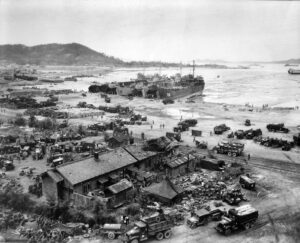 1948, the communist state of the Korean Democratic People’s Republic was established in North Korea. In August, the Democratic Republic of Korea was established in South Korea. By 1949, both the United States and the USSR had withdrawn the majority of their troops from the Korean Peninsula.
1948, the communist state of the Korean Democratic People’s Republic was established in North Korea. In August, the Democratic Republic of Korea was established in South Korea. By 1949, both the United States and the USSR had withdrawn the majority of their troops from the Korean Peninsula.
Unfortunately, that didn’t solve the problem, and likely exacerbated it. Without the controls they had placed, things quickly got bad again, and at dawn on June 25, 1950, which is still June 24 in the United States and Europe, approximately 90,000 communist troops of the North Korean People’s Army invaded South Korea across the 38th parallel. The move caught the Republic of Korea’s forces completely off guard and threw them into a hasty southern retreat. That afternoon, the UN Security Council met in an emergency session and approved a US resolution calling for an “immediate cessation of hostilities” and the withdrawal of North Korean forces to the 38th parallel. At the time, the USSR was boycotting the Security Council over the UN’s refusal to admit the People’s Republic of China and so missed its chance to veto this and other crucial UN resolutions.
On June 27th, when President Truman announced to the nation and the world that America would intervene in the Korean conflict in order to prevent the conquest of an independent nation by communism, he was also suggesting that the USSR was behind the North Korean invasion, and in fact the Soviets had given tacit approval to the invasion, which was carried out with Soviet-made tanks and weapons. There was concern that US intervention would lead to open warfare between the United States and Russia after years of “cold war.” Nevertheless, Truman’s decision was met with overwhelming approval from Congress and the US public. Truman did not ask for a declaration of war, but Congress voted to extend the draft and authorized Truman to call up reservists. Everyone knew it was inevitable.
On June 28, the Security Council met again. The Soviet Union was still boycotting, and so, in their absence, the council passed a US resolution approving the use of force against North Korea. On June 30, Truman agreed to 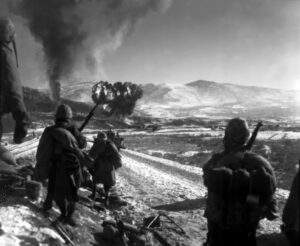 send US ground forces to Korea, and on July 7 the Security Council recommended that all UN forces sent to Korea be put under US command. The next day, General Douglas MacArthur was named commander of all UN forces in Korea. The Korean war was underway, and before it was over, South Korea, the United States, and their allied casualties included 170,927 dead and 32,585 missing (162,394 South Koreans, 36,574 Americans, 4,544 others), with a total of 566,434 wounded. North Korea and their allied casualties included 398,000–926,000 dead and 145,000+ missing (335,000–526,000 North Koreans, 208,729–400,000 Chinese, 299 Soviet), and a total of 686,500 wounded.
send US ground forces to Korea, and on July 7 the Security Council recommended that all UN forces sent to Korea be put under US command. The next day, General Douglas MacArthur was named commander of all UN forces in Korea. The Korean war was underway, and before it was over, South Korea, the United States, and their allied casualties included 170,927 dead and 32,585 missing (162,394 South Koreans, 36,574 Americans, 4,544 others), with a total of 566,434 wounded. North Korea and their allied casualties included 398,000–926,000 dead and 145,000+ missing (335,000–526,000 North Koreans, 208,729–400,000 Chinese, 299 Soviet), and a total of 686,500 wounded.
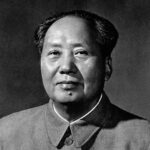
 When people doesn’t understand the world around themselves, huge mistakes can be made that affect the world, or at least a good part of it, for a long time. In 1958, Mao Zedong, the leader of the People’s Republic of China was about to make just such a mistake. In a move he called The Great Leap Forward, designed to reconstruct the country from an agrarian economy into large-scale industrialization. Part of this was the Four Pests campaign against flies, mosquitoes, rats, and sparrows. Now I can understand why Zedong considered flies, mosquitoes, and rats pests, but sparrows not so much, although, I suppose some people might disagree with me.
When people doesn’t understand the world around themselves, huge mistakes can be made that affect the world, or at least a good part of it, for a long time. In 1958, Mao Zedong, the leader of the People’s Republic of China was about to make just such a mistake. In a move he called The Great Leap Forward, designed to reconstruct the country from an agrarian economy into large-scale industrialization. Part of this was the Four Pests campaign against flies, mosquitoes, rats, and sparrows. Now I can understand why Zedong considered flies, mosquitoes, and rats pests, but sparrows not so much, although, I suppose some people might disagree with me.
Zedong basically told his nation to take pots and pans to kill all the sparrows. His campaign was successful. Millions of sparrows were killed, but this left crops vulnerable to locusts…normally kept under control by the sparrows. This agricultural policy, poor weather, and famine led to the deaths of 45 million people. Among all the incidents of mass murder caused by states in the 20th century, probably the least known in the English-speaking world is the Great Leap Forward of Mao Zedong. For some reason, the Great Leap Forward was considered somehow important enough to earn a place in the Black Book of Communism, in a description so horrifying it would haunt anyone who read about it.
Looking back on the process, so many things were done wrong. First, the rulers presumed to know a better path, when indeed, they knew nothing about what they were doing. Then, to make matters worse, they beat the population into submission in order that the plan could be implemented. The plan was intensified by a wild political enthusiasm among the population. For some reason, or maybe like the Nazis, the citizen enforcers were often worse than the tyrants at the top. In the famine that followed…well, most of us have no idea what went on. For example, all livestock was eaten or died, and the pillaging of property effectively ended the possibility of domesticating animals. Before long, there were no animals. Something we don’t think about, nor will I go into detail, there was no fat for cooking whatever food was left. People were dying, and well…corpses were used for fat as needed. Think about this the next time you prepare dinner. Think of cooking without oils at all, no butter, corn oil, bacon, or any other fat at all. Be thankful for markets that make oil, butter, and such. Things shouldn’t be taken for granted.
China’s “Great Leap Forward” in 1958-1961 became one of the worse disasters in human history. The dis hewn of deeply misguided industrialization and food procurement policies led to the deaths of around thirty-five million people from starvation and prevented the births of perhaps forty million more. Weather conditions were not unusual in these years; the famine was entirely man-made. Zedong and his fellow leaders were determined to show the superiority of communism, to quickly overtake production levels in Russia and in Britain, and to establish Mao’s leadership of the communist world. Outlandish production targets were set to match the food needs of rapidly industrializing cities and to earn foreign exchange through exports of food. Under the totalitarian system maintained by the Communist Party of China, rural communes competed to exaggerate their output, further inflating the already unattainable procurement quotas and leaving nothing for the people to eat. The Communist Party caused further chaos in the countryside by ordering that all private land be turned into communes, confiscating private property and even private cooking utensils, and making people eat in communal kitchens.
That, as well as the enormous increases in production that were confidently expected, peasant labor was diverted to public works projects and rural steel-making plants, which achieved nothing. Travel restrictions stopped communication, meaning word of what was going on, didn’t out from getting out. The penalties for disobedience were clear. In all, three-quarters of a million people were executed in 1950-51. Still in the early years, of the revolution, the Party was widely trusted. When Zedong learned of the disasters, you would have thought he would have taken measures to save the people, but his goal was to hide the facts. He doubled down on the policies, purging the messengers, labeling them “right-deviationists,” and blaming peasants for secretly hoarding food. Anything else would have made him look like a bad leader…at least in his own mind.
If Zedong had changed course when the extent of the mass starvation first became clear to the leadership, the famine would have lasted one year and not three, and in any case there was more than enough grain in government stores to prevent everyone from starving. Life expectancy in China, which was nearly 50 in 1958, fell to below 30 in 1960; five years later, once Mao had stopped killing people, it had risen to nearly 55. Nearly a third of those born during the Great Leap Forward did not survive it.
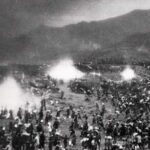

Zedong was born December 26, 1893, Shaoshan, Hunan province, China. In his political career, he was the principal Chinese Marxist theorist, soldier, and statesman who led his country’s communist revolution. Mao was the leader of the Chinese Communist Party (CCP) from 1935 until his death, and he was chairman (chief of state) of the People’s Republic of China from 1949 to 1959 and chairman of the party also until his death on September 9, 1976 in Beijing, China. I guess he survived the Great Leap Forward, unlike many of his people.
 It was a big move for a Milwaukee, Wisconsin girl, but in the end, it would be her undoing. Mildred Fish was born in Milwaukee in 1902, and upon her high school graduation, she studied and then taught English at UW-Madison. It was there that she met Arvid Harnack, a Rockefeller Fellow from Germany. They soon fell in love, and were married in 1926. Because she was a progressive woman and proud of her name, Mildred chose to hyphenate her name, and became known as Mildred Fish-Harnack.
It was a big move for a Milwaukee, Wisconsin girl, but in the end, it would be her undoing. Mildred Fish was born in Milwaukee in 1902, and upon her high school graduation, she studied and then taught English at UW-Madison. It was there that she met Arvid Harnack, a Rockefeller Fellow from Germany. They soon fell in love, and were married in 1926. Because she was a progressive woman and proud of her name, Mildred chose to hyphenate her name, and became known as Mildred Fish-Harnack.
A few years later, she and Arvid both moved to Germany, where she taught and also worked on her doctorate while he worked for the German government. It was during those years that Fish-Harnack became interested in the Soviet Union, where women could choose where to work and also had other rights that women in the United States did not have…a situation which would very soon sound absurd. Nevertheless, at that time, it was so. Throughout the 1930s, Mildred and Arvid, who became increasingly 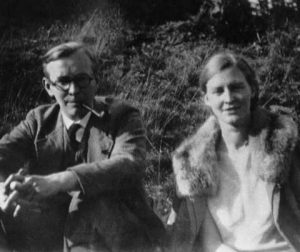 alarmed by Hitler’s rise to power, began to communicate with a close circle of associates who believed communism and the Soviet Union might be the only possible stumbling block to complete Nazi tyranny in Europe. As the Hitler and the Nazi regime began to come into power, Fish-Harnack and her husband joined a small resistance group, which the Nazi secret police…the Gestapo…would later call the Red Orchestra. This resistance group smuggled important secrets about the Nazis to the United States and Soviet governments and helped Jews escape from Germany. When war was declared in 1941, she did not leave with other American expatriates.
alarmed by Hitler’s rise to power, began to communicate with a close circle of associates who believed communism and the Soviet Union might be the only possible stumbling block to complete Nazi tyranny in Europe. As the Hitler and the Nazi regime began to come into power, Fish-Harnack and her husband joined a small resistance group, which the Nazi secret police…the Gestapo…would later call the Red Orchestra. This resistance group smuggled important secrets about the Nazis to the United States and Soviet governments and helped Jews escape from Germany. When war was declared in 1941, she did not leave with other American expatriates.
Of course, their activities were espionage and would eventually cost them their lives. For his part, her husband,  Arvid was hanged in December 1942. Mildred was given a six year sentence, but Hitler refused to endorse her punishment and she was retried and condemned on February 16, 1943. She was beheaded by guillotine. Because of her connection to possible communist sympathies and post-war McCarthyism, her story is virtually unknown in the United States. She was the only American woman who was ever put to death on the direct order of Adolf Hitler for her involvement in the resistance movement. Her last words were, “And I have loved Germany so much.” In the Cold War years after World War II, Fish-Harnack’s name and legacy were not honored in the United States, because she and her husband were believed to have been connected with Communism. For a time they were hated by both of their home countries. Once the truth came out in 1986, that changed and Mildred Fish-Harnack Day was established in Wisconsin. It takes place every year on her birthday, September 16th.
Arvid was hanged in December 1942. Mildred was given a six year sentence, but Hitler refused to endorse her punishment and she was retried and condemned on February 16, 1943. She was beheaded by guillotine. Because of her connection to possible communist sympathies and post-war McCarthyism, her story is virtually unknown in the United States. She was the only American woman who was ever put to death on the direct order of Adolf Hitler for her involvement in the resistance movement. Her last words were, “And I have loved Germany so much.” In the Cold War years after World War II, Fish-Harnack’s name and legacy were not honored in the United States, because she and her husband were believed to have been connected with Communism. For a time they were hated by both of their home countries. Once the truth came out in 1986, that changed and Mildred Fish-Harnack Day was established in Wisconsin. It takes place every year on her birthday, September 16th.

